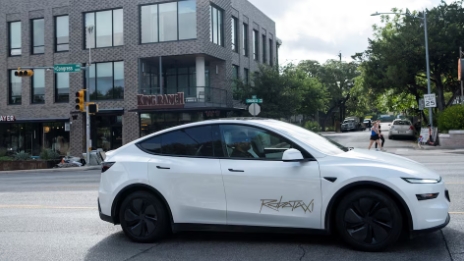
A Tesla robotaxi drives on the street along South Congress Avenue in Austin, Texas, U.S., June 22, 2025.
The trial involved approximately 10 vehicles, each with a front-seat safety monitor to oversee operations. Tesla offered rides for a flat fee of $4.20, as stated by Musk on X. Invitations were sent to select social media influencers, including Tesla investor Sawyer Merritt, who shared videos of ordering and riding in a robotaxi to Frazier's Long and Low, a local bar and restaurant. The service operates within a limited zone, with restrictions such as avoiding bad weather, complex intersections, and passengers under 18.
Industry experts note that while the Austin trial is a significant step, scaling up robotaxi operations in Austin and other cities presents substantial challenges. Philip Koopman, a Carnegie Mellon University professor specializing in autonomous vehicle technology, remarked: "A successful Austin trial for Tesla would be the end of the beginning - not the beginning of the end." He suggested that fully developing a robotaxi industry could take years or even decades.
On Friday, June 20, 2025, Texas Governor Greg Abbott signed legislation requiring state permits for autonomous vehicles, effective September 1, 2025. The law mandates operators to obtain approval from the Texas Department of Motor Vehicles and provide emergency response protocols. It defines autonomous vehicles as having at least Level 4 autonomy, allowing operation without a human driver under specific conditions. Bryant Walker Smith, a University of South Carolina law professor, noted: "In Texas, the permit is easy to get and easy to lose," indicating a balanced regulatory approach compared to stricter states like California.
Tesla’s robotaxi initiative relies solely on camera-based technology, differing from competitors like Waymo and Amazon’s Zoox, which use additional sensors like lidar and radar. Musk emphasized safety, stating Tesla would be: "super paranoid" about robotaxi safety in Austin. The company’s stock value increasingly depends on its ability to deliver autonomous vehicles and humanoid robots, positioning Tesla as the world’s most valuable automaker.
The launch represents a milestone for Tesla, but its long-term success hinges on overcoming technical and regulatory hurdles to expand autonomous ride services.